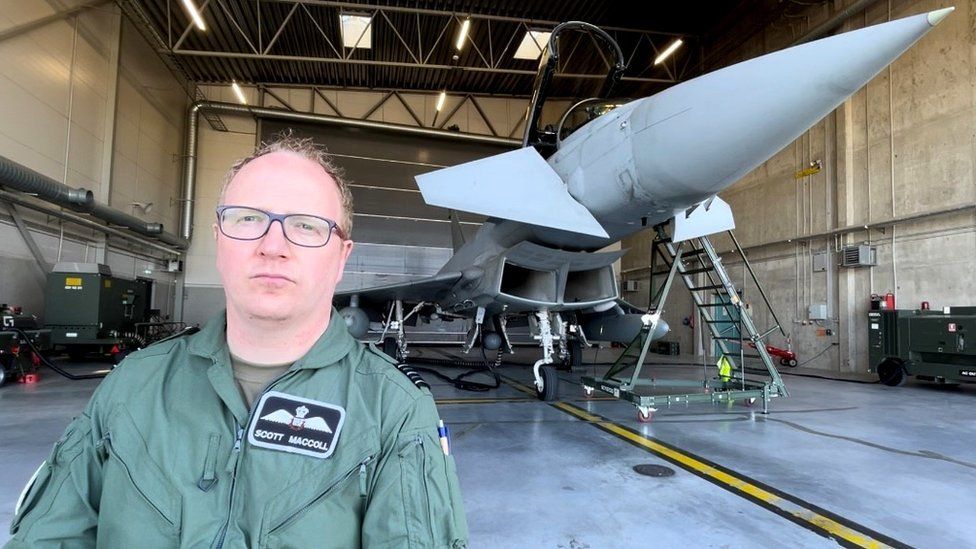Ukraine war: Nato watches Russian ‘Zombies’ in Estonia

In a small crew room near the runway of Estonia’s Amari airbase, members of the Quick Reaction Force for Nato’s Baltic Air Policing mission are gathered. They were watching old episodes of Friends when they receive an alert about a suspicious Russian aircraft, referred to as a “Zombie.” The crew quickly moves to the Operations Room where they analyze incoming data on screens and digital maps marked as “Nato Secret.”
The RAF’s IX Squadron of Typhoon fighter jets, based at Amari airbase, has taken over the mission from Germany’s Richthofen Squadron. Nato’s focus has shifted to securing its eastern borders due to Russia’s invasion of Ukraine. The goal is to deter Russia from further invasions, particularly targeting Nato countries like the Baltic states or Poland.
A “Zombie” aircraft refers to a Russian plane that is not following standard procedures, such as filing a flight plan, communicating with air traffic control, or responding to communication attempts. The Typhoon pilots scramble to their aircraft whenever an alarm sounds, responding as if it were a real threat. They quickly get airborne and intercept the aircraft.
The Baltic Sea is bordered by seven Nato members, soon to be eight with Finland’s inclusion. However, Russia still maintains strategic positions in the Baltic region, with St Petersburg and the exclave of Kaliningrad. Russian aircraft frequently fly between these bases, keeping Nato forces on high alert.
When intercepting the Russian aircraft, the Typhoon pilots identify them, receive further instructions from the Operations Center, and respond accordingly. While the Rules of Engagement are classified, the pilots often take photographs of the intercepted aircraft as they escort them past Nato airspace.
The RAF pilots have conducted eight interception missions, all against Russian aircraft. The illegal invasion of Ukraine by Russia has heightened the importance of Baltic air policing. Efforts are also being made to bolster ground forces in the region to deter potential Russian aggression.
Nato’s “enhanced forward presence” policy includes a multinational Battle Group based in northern Estonia. It consists of British-led forces, including main battle tanks, rocket systems, helicopters, and French Foreign Legionnaires. This presence acts as a deterrent, with the hope of avoiding escalation.
However, the current forces in place are relatively small compared to Russia’s capabilities. Nato acknowledges that its presence in Estonia would act as a “tripwire,” triggering rapid reinforcement if Russian forces were to advance westward. If necessary, Nato forces would move east and engage in combat with Russia.
Picture Courtesy: google/images are subject to copyright
